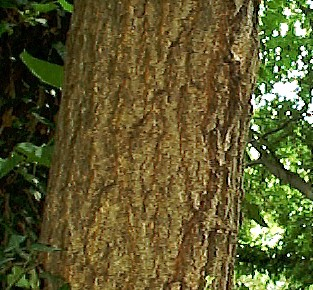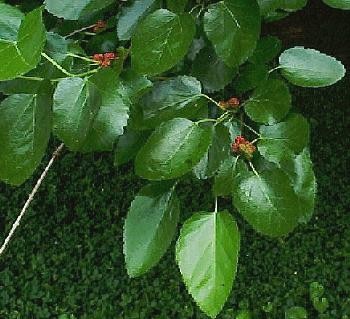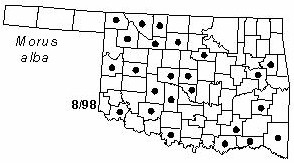

Tree to 18 m (60 ft) tall and 30 cm (1 ft) in diameter. Bark light brown to gray and smooth, becoming divided into narrow scaly ridges. Twigs thin, light brown, glabrous. Buds small, pointed, brown. Sap milky. Leaves alternate, long-petioled, variable in shape and degree of lobing, sometimes unlobed but often 3- or 5-lobed, coarsely serrate, 6-15 cm (2.4-6 in) long and 5-10 cm (2-4 in) wide, shiny green and glabrous above, pale green and more or less hairy below. Flowers staminate and pistillate on different trees, small, green, crowded in clusters 15-25 mm (0.6-1 in) long in early spring. Fruits small, 1-seeded, numerous, crowded into clusters 10-20 mm (0.4-0.8 in) long, white to purple when ripe in late spring.
Distribution: Native to eastern Asia, but naturalized over much of the U. S.
Habitat: Roadsides, old fields, old homesites.
NWI status: FACU
Comment: White mulberry is the source of food for the silkworm. In the U. S., it has been widely used in landscaping, erosion control, and windbreaks. Morus is the old Latin name; alba refers to the white fruits.
Distribution in Oklahoma: 
BACK
NEXT
RETURN TO INDEX
Last update: 9/14/99
 Go to Oklahoma Biological Survey Home Page
Go to Oklahoma Biological Survey Home Page
 Disclaimer
Disclaimer